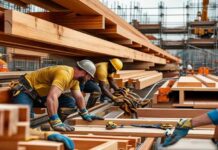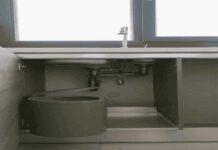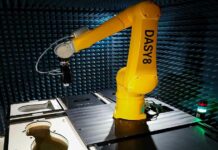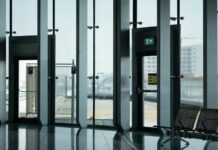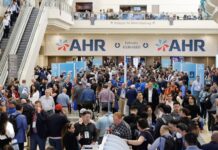Construction zones are familiar for drivers, whether on highways, city streets, or rural roads. These zones, marked by orange cones, flashing lights, and signs warning of upcoming road work, are designed to improve and maintain our transportation infrastructure. However, they can also become hotspots for accidents. The question that arises is: are car accidents in construction zones common? The short answer is yes, but the reasons behind this frequency, the factors contributing to these accidents, and the potential solutions require a more in-depth exploration.
The Prevalence of Accidents in Construction Zones
Unfortunately, car accidents in construction zones are more common than you think. According to the Federal Highway Administration (FHWA), in the United States alone, there were over 100,000 crashes in work zones in 2020, leading to thousands of injuries and a significant number of fatalities. The National Highway Traffic Safety Administration (NHTSA) reported that in 2022 there were 891 fatalities in work zone crashes.
Of these fatalities:
- 528 deaths in construction zones
- 305 deaths happened in work zones
- 49 deaths occurred in maintenance zones
- 9 deaths were in a utility zone
Various factors contribute to the prevalence of accidents in construction zones. These areas are typically characterized by abrupt changes in traffic patterns, reduced lane widths, and workers and equipment on or near the roadway. Combined with the usual driving hazards, these conditions can create a perfect storm for accidents.
Factors Contributing to Construction Zone Accidents
Several factors contribute to the high number of accidents in construction zones. According to a Denver car accident legal expert, Understanding these factors is crucial for addressing and mitigating the risks associated with driving in these areas.
- Reduced Speed Limits: Construction zones often have reduced speed limits to ensure the safety of workers and drivers. However, not all drivers adhere to these limits. Speeding in construction zones is a common cause of accidents. When vehicles are moving too fast, drivers have less time to react to changes in the road, such as sudden stops, lane shifts, or the presence of construction equipment.
- Narrow Lanes and Lane Shifts: In many construction zones, lanes are narrowed or shifted to make room for roadwork. These changes can catch drivers off guard, especially if they need to pay more attention. Narrower lanes reduce the margin for error, making it easier for vehicles to sideswipe each other or collide with barriers.
- Driver Distraction: Distracted driving is a significant problem on all roads, but it becomes even more dangerous in construction zones. With workers, equipment, and unusual traffic patterns, drivers must be entirely focused. However, distractions like mobile phones, GPS devices, or even looking at the construction work can lead to accidents.
- Inadequate Signage and Poor Lighting: Clear signage and proper lighting are essential in construction zones to guide drivers safely through the area. Unfortunately, in some cases, signage may be unclear, confusing, or placed too close to the work zone, giving drivers little time to react. Poor lighting at night can also make it difficult for drivers to see workers, equipment, or changes in the road.
- Driver Impatience and Aggression: Construction zones often lead to delays and frustrate drivers. This frustration can lead to aggressive driving behaviors, such as tailgating, abrupt lane changes, or attempts to speed through the zone before other drivers. These behaviors significantly increase the likelihood of accidents.
- Work Zone Intrusions: Sometimes, vehicles inadvertently or intentionally enter areas where construction work occurs. These intrusions can be extremely dangerous, not only for the driver but also for the construction workers. Barriers or cones that are not correctly set up or maintained can contribute to such intrusions.
- Weather Conditions: Weather can play a significant role in construction zone accidents. Rain, fog, or snow can reduce visibility and slippery the road surface, increasing the risk of accidents. These conditions can be particularly hazardous in construction zones, where the road might already be uneven or have loose gravel.
The Impact of Construction Zone Accidents
The consequences of accidents in construction zones are often severe. Due to construction workers, heavy machinery, and other obstacles, accidents in these areas tend to result in more severe injuries and fatalities than accidents on open roadways. Additionally, construction zone accidents can lead to significant traffic delays, further complicating the situation and increasing the risk of secondary accidents.
For construction workers, the dangers are even more significant. Workers are often near moving traffic, with little more than cones or barriers separating them from vehicles. In 2019, 135 workers were killed in road construction accidents, highlighting the occupational hazards associated with these environments.
The impact of construction zone accidents extends beyond the immediate consequences of injury or death. There are also economic implications. Accidents can lead to costly delays in construction projects, increased insurance premiums, and legal liabilities. For drivers, an accident in a construction zone can result in fines, increased insurance rates, and, in severe cases, criminal charges.
Preventing Construction Zone Accidents
While construction zones are inherently dangerous, several measures can be taken to reduce the risk of accidents.
- Enhanced Signage and Lighting: Improving the clarity and visibility of signs in construction zones can help guide drivers safely through the area. Signs should be placed well before the work zone to give drivers ample time to adjust. Additionally, adequate lighting is essential, especially for nighttime construction, to ensure that drivers and workers are visible.
- Strict Enforcement of Speed Limits: Law enforcement agencies can be crucial in ensuring drivers adhere to reduced speed limits in construction zones. Speed cameras or increased police presence can deter speeding and encourage safer driving behaviors.
- Public Awareness Campaigns: Educating the public about the dangers of construction zones and the importance of following safety guidelines can help reduce accidents. Campaigns highlighting the risks of distracted driving, speeding, and aggressive driving in construction zones can raise awareness and promote safer driving practices.
- Use of Technology: Technological advancements can also contribute to reducing accidents in construction zones. For example, intelligent work zone systems can provide real-time information to drivers about traffic conditions, lane closures, and delays, allowing them to adjust their driving accordingly. Additionally, autonomous vehicles and advanced driver-assistance systems (ADAS) have the potential to reduce human error in construction zones significantly.
- Worker Training and Safety Protocols: Construction companies must ensure their workers are adequately trained and equipped with the necessary safety gear. Establishing clear safety protocols and regularly reviewing them can help prevent accidents. Workers should also be trained to be vigilant and aware of their surroundings.
- Barriers and Buffer Zones: Sturdy barriers and buffer zones can provide an additional layer of protection for both workers and drivers. Barriers should be placed to absorb the impact of a collision and prevent vehicles from entering the work zone. Buffer zones, which are areas between the work site and moving traffic, can also reduce the risk of accidents.
Stay Safe When In Construction Zones Now
Car accidents in construction zones are indeed common but not inevitable. Understanding the factors that contribute to these accidents and implementing effective safety measures can reduce their frequency and severity. Drivers, construction companies, and government agencies all have a role to play in ensuring that construction zones are as safe as possible.
The key for drivers is to remain vigilant, adhere to speed limits, and avoid distractions when approaching and driving through construction zones. Construction companies should focus on worker safety, clear signage, and the use of protective barriers. Government agencies must continue to enforce traffic laws and invest in public awareness campaigns to promote safe driving behaviors.
In the end, safety in construction zones is a shared responsibility. By working together, we can make these areas safer for everyone, reduce the number of accidents, and save lives.






